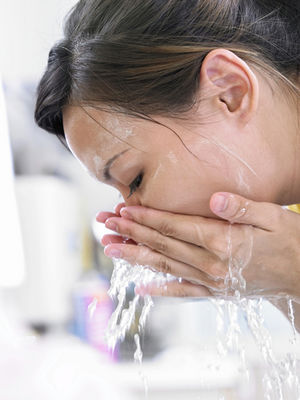Hygiene Therapy
| See Also | Naturopathic Therapies |
|---|
The hygienic school of thought is considered a forerunner of American naturopathy. It originated as a lay movement and followed the popular teachings of Sylvester Graham and William Alcott. Sylvester Graham began preaching the doctrines of temperance and hygiene in 1830, and published, in 1839, Lectures on the Science of Human Life, two volumes that prescribed healthy dietary habits. He also published a journal called the Graham Journal, that was later known as the Water-Cure Journal. He emphasized a moderate lifestyle, recommending an anti-flesh diet and bran bread as an alternative to bolted or white bread. The introduction of hygiene as a form of preventing disease also gained popularity after 1834 when William Kelly, a physician introduced the idea of preventing the spread of disease via sanitation following epidemics of cholera.[1]
In the late 1800s and early 1900s there was much focus and education on the need for proper sanitation and hygiene by both practitioners and the government. This period saw important advances including the provision of safe drinking water, public baths and beaches, and municipal garbage services, as well as government introduced sanitation standards.[2]
The medical physician Russell Trall was instrumental in promoting the hydropathic and hygienic movement in the mid 1800s, he was also a leading advocate of vegetarianism. In 1891, A. Rienhold, who had been a student of Kneipp and Bilz, opened a water-cure institute utilizing Kneipp hydrotherapy and herbs, massage, diet, gymnastics, air, and light baths as well as suggestion, typical of the European system of natural health care. [1]
Check out Hygiene
References
- ↑ 1.0 1.1 Kirchfield Friedhelm, Boyle Wade (1994) Nature Doctors: Pioneers in Naturopathic Medicine NCNM Press, Portland Oregon
- ↑ Lloyd Iva (2009) The History of Naturopathic Medicine, a Canadian perspective McArthur & Company, Toronto.
